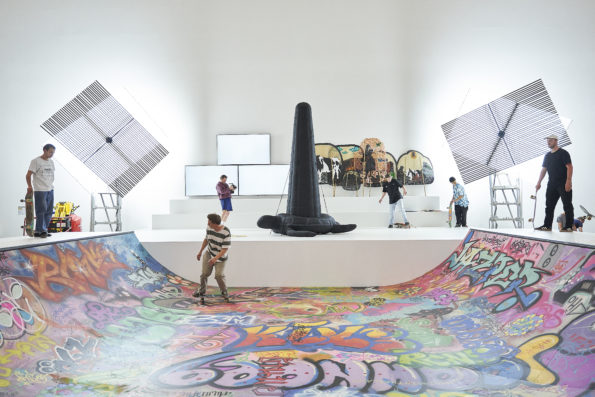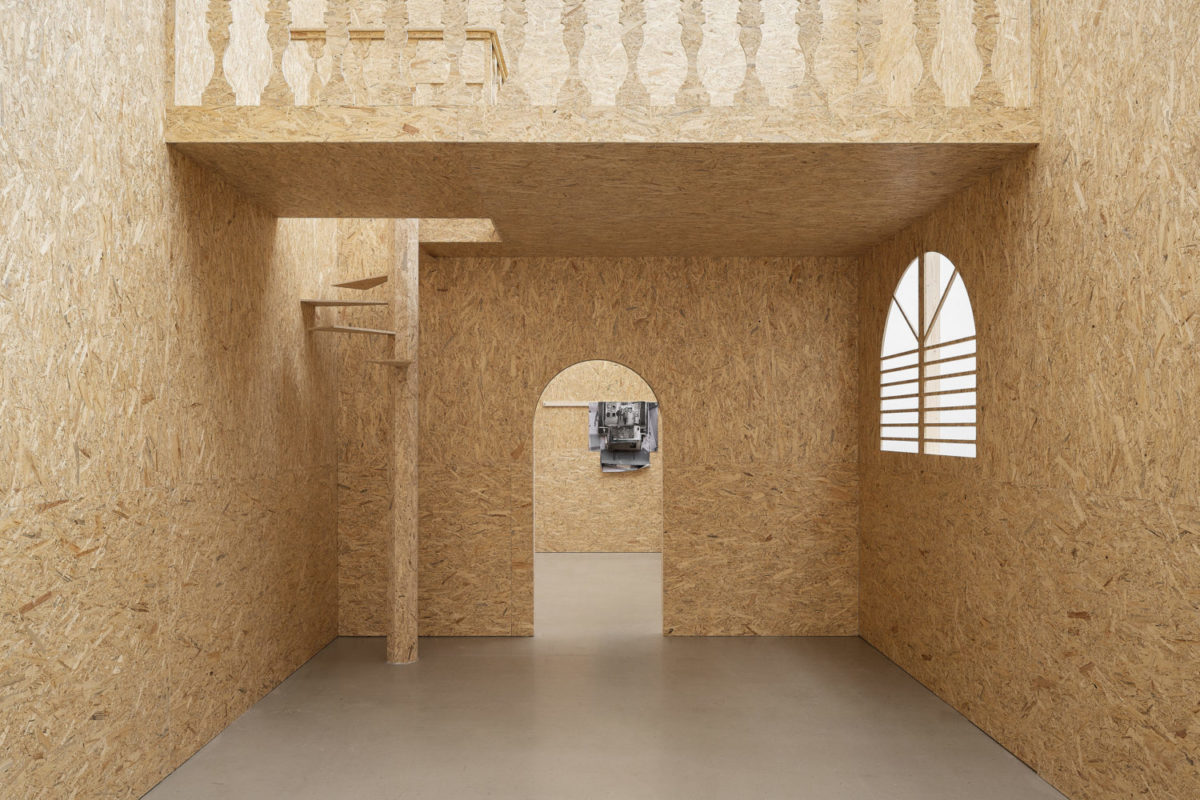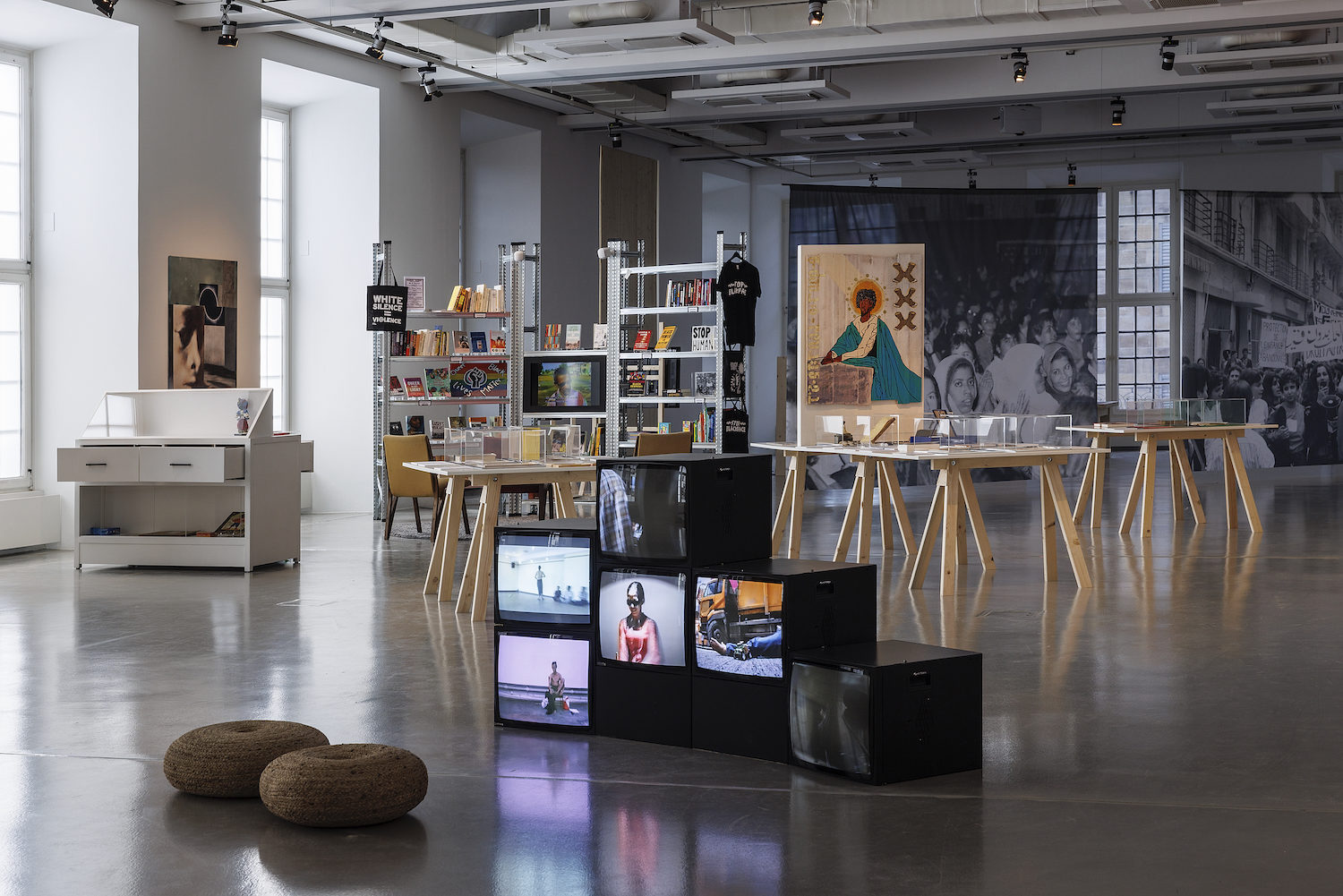Search
To search for an exact match, type the word or phrase you want in quotation marks.
A*DESK has been offering since 2002 contents about criticism and contemporary art. A*DESK has become consolidated thanks to all those who have believed in the project, all those who have followed us, debating, participating and collaborating. Many people have collaborated with A*DESK, and continue to do so. Their efforts, knowledge and belief in the project are what make it grow internationally. At A*DESK we have also generated work for over one hundred professionals in culture, from small collaborations with reviews and classes, to more prolonged and intense collaborations.
At A*DESK we believe in the need for free and universal access to culture and knowledge. We want to carry on being independent, remaining open to more ideas and opinions. If you believe in A*DESK, we need your backing to be able to continue. You can now participate in the project by supporting it. You can choose how much you want to contribute to the project.
You can decide how much you want to bring to the project.

Forgive the irony if I say that we were greeted with this welcoming slogan of a manifesto by Sandra Ceballos, artist and founder of the Laboratorio Aglutinador in Havana, the city’s first independent space and refuge for the voices that most challenge Cuba’s institutions. Sandra Ceballos participated in documenta fifteen together with Ezequiel Suárez, invited by INSTAR (Hannah Arendt Institute of Artivism founded, among others, by the artist Tania Bruguera), one of the 14 grassroots groups (the lumbung members) that in turn invited the rest of the participating groups, totaling more than 1000 lumbung artists in the event. Although Sandra Ceballos’ manifesto, located in the Documenta Halle space, comes from a 2008 exhibition of the same title in which the artist denounced the role of cultural agents in the Cuban government, the text helps to clarify many of the new paradigms that have been circulating in the art world in recent years and which this new Documenta has undoubtedly brought to its ultimate consequences. I am referring to the increasingly widespread distrust of curatorship as an authoritarian exercise, riddled (according to the artist) with “erudite verdicts.” Sandra Ceballos also acknowledges “that this exhibition has not been curated by any specialist, critic or curator, it has been organized freely and shamelessly and without pathological ties to participating artists. The limit of exhibiting artists was imposed by the physical space itself.”

documenta fifiteen: Instituto de Artivismo Hannah Arendt (INSTAR), Espacio Aglutinador, 2022. Installation view, Documenta Halle, Kassel, 12 June 2022, photo: Nicolas Wefers
Indeed, the interdisciplinary ruangrupa collective, responsible for the artistic direction of documenta fifteen, has recognized that “no one can organize all of Documenta.” This libertarian spirit that defies any curatorial structure seems to extend throughout the entire event, starting with the absence of a theme or conceptual axis that normally includes a curator’s statement. documenta fifteen is instead a display of ways of doing things, of methodologies of action and collaboration that substitute the curatorial for the community. Nor does it corresponds to the exhibition itself, which can be visited during 100 days in Kassel, but rather that it is, on the contrary, a dynamic organism that has been collectively created and that will be activated through days of meetings, conversations, performances, readings, workshops, and parties. It has been said that documenta fifteen is not to be seen but rather to be experienced. The halls of the Fridericianum and other venues have become artists’ studios, assembly spaces, living-rooms, schools, orchards, and video game rooms. The work processes of each of the groups, presented without a unified curatorial mediation, coexist with a skatepark, a sauna and rururkids which, more than exhibition displays, configure spaces in which meetings, games and domestic life are reclaimed, a certain post-pandemic community, a situated and globally-oriented utopia.

documenta fifteen: Asia Art Archive, 2022, The Black Archives, 2022. Installation view, Fridericianum, Kassel, 11 June 2022, photo: Frank Sperling
None of this corresponds to the logic of a museum but is instead an “un-museum,” such as the Folk Un-Museum of the Inland collective in the Ottoneum, which vindicates its origins by simulating the interior of a cave in which a video produced in collaboration with Hito Steyerl, together with a sound anthropology archive and the circulation of a cheesecoin. documenta fifteen is basically a giant cosmology that, in addition to providing services to the community outside of Documenta itself, aspires to a new form of production, distribution and, above all, organization in the world. Of course, every organization in the world needs an original mythology from which all the stories start, and for documenta fifteen it is the lumbung, an Indonesian system for collecting and storing rice that not only organizes shared resources, but also builds a new language: lumbung members, lumbung artists, lumbung press, lumbung radio, lumbung kiosk, lumbung gallery, and lumbung stories. It is no coincidence, thus, the importance of the various publications that have been printed in this Documenta (with the coordination of the consonni collective) as well as the role of the lumbung press, a printing press installed in Documenta Halle that represents objectively the spirit of documenta fifteen of appropriating both the means of production (extending for the first time to the industrial neighborhood of Bettenhausen) as well as the power to build the ways of speaking. The ability to name concepts has always been the aim of any project that aspires to substitute one type of power for another, as was the case of the French Revolution which renamed the months and days. In the same way, the Manifold project by the artist Erick Beltrán at the Museum für Sepulkralkultur, developed together with students from the School of Fine Arts of the University of Kassel, asks, through a complex installation of sculptures, drawings and infographics, what (not always evident) images emerge when we ask ourselves about the various manifestations of power.

documenta fifteen: Fridskul Common Library, Fridericianum, Kassel, 17 June 2022, photo: Victoria Tomaschko
With this, documenta fifteen invites us to definitively open the debate on curating (or curation) as an apology for the statement in which any metaphor can be freely stretched and fitted to question the power of curators who act almost like finance brokers speculating with their contacts. Perhaps this justifies the fact that more and more artists refuse to submit to curatorial logic, understood as a vehicle of selection, and instead allow themselves to be seduced into do-it-yourself modes. This might explain the proliferation of workshops in which a “curation of listening” is invoked. One might wonder, however, if all curation, properly understood, does not consist precisely in listening, in that complex process of mediation where, in addition to paying attention to the artists, one must also dialogue with the different cultural workers involved and, of course, with different audiences. Can it be denied that all curating is by definition collective? ruangrupa has also stated that their project for Documenta is based on friendship. Aristotle knew that because of love for one’s own friends it wasn’t possible to be friends with many, that a kind of affective selection is basically a form of caring. Perhaps the curatorial selection could be understood, thus, as a mode of responsibility and commitment, a crucial responsibility and commitment when it comes to defending not only the discursive interpretation of a project but above all the selected artists and teams.
Before the German President Frank-Walter Steinmeier stated at the opening of documenta fifteen that there are limits to the freedom of artists, before the work of the Indonesian collective Taring Padi was censored, and before some activities and festivities were suspended, I at least had time to celebrate the beginning or, who knows, maybe the end of a cycle with the queer BDSM party organized by Party Office b2b Fadescha in WH22, in the Gudskul and Rururadio karaoke, in the rave organized by the Japanese collective Cinema Caravan , and to swim in the Fulda after visiting the MAMA facilities in the Karlsaue and the Jumping in Hanoi bridge by Recetas Urbanas. And then, slightly hungover, and with all this going around in my head, I went home.
[Featured image: documenta fifiteen: Baan Noorg, The Rituals of Things, 2022. Installation view, Fridericianum, Kassel, 13 June 2022, photo: Nicolas Wefers]

"A desk is a dangerous place from which to watch the world" (John Le Carré)